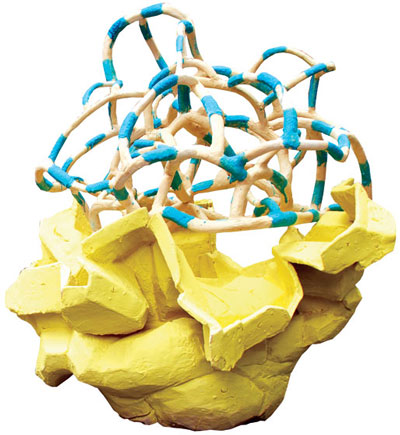
2009 MFA Fellowship recipient Raquel Sarai Mendoza
Interview by Whitney Stoepel
Raquel Sarai Mendoza received her Bachelors of Applied Arts and Sciences with an emphasis in Sculpture from San Diego State University in 2007, and her MFA in Sculpture from the School of the Art Institute (SAIC) in 2009. In an email interview F Newsmagazine learned more about her artistic practice, as well as her perspectives on SAIC.
Why did you choose the SAIC sculpture program for graduate school?
Mendoza: I was interested in the department’s interdisciplinary practice. During my MFA, I was able to explore various departments, students, and mediums outside of sculpture. [Once at SAIC] I found myself playing with field recorders and video, hanging out at the Art & Tech lab for free wires and motors that I still can’t figure out. Trying hard to keep up with extremely knowledgeable art history students, I should’ve known I was in for a treat when I was the only studio student in the class.
Also, I liked the idea of moving away from California. There’s something exciting about turning down what you always wanted, in my case grad school in San Francisco, for something that was never in your plans.
What are the strengths and weaknesses of SAIC’s sculpture program?
Mendoza: Strengths: The sculpture department has a wide range of faculty, each one different from the next. I met some great advisors who shared their experience, offered support and provided “tough love” when they saw that I wasn’t working to my full potential.
Weaknesses: At first I thought it was the two years we had to complete our degree. It goes by so fast. But now that I’ve graduated — I realize it’s perfect. Get in, get out and start working. Everything is so different once you leave the institutional womb. Then the fun really begins!
How has your work evolved?
Mendoza: My art practice began with a humorous approach of replicating and transferring social environments into condensed spaces. For example, the installation “Mini Bar” consisted of an entire bar — its functions of drinking, dancing, live music and sports television — squeezed into a tool shed. At that time, I didn’t view the space in my artwork as restricted, but rather as an artist taking advantage of the space with which she is provided.
Towards the end of my undergraduate studies my art practice became strongly influenced by social events. It began with local events such as San Diego’s fondness for boats. The installation “Fishing Hole” involved the transforming of a 17-foot boat (that had been parked on a driveway for two years) into a personal fishing environment.
My practice also started to focus on international events such as North Korea’s announcement of nuclear bombs. This led me to transform an old refrigerator into a “Bomb Shelter” just like the fall-out shelters that were built during the Cold War.
Upon entering graduate school at SAIC, I expanded from physical spaces towards mental, social and cultural spaces. I began to question how physical spaces change our mental perception of a space. I’m currently expanding my interest in space and current/historical events and applying it to my artistic practice.
What do you plan on doing with your MFA?
Mendoza: Tough question. Let’s see — so far I have used it to teach art and design classes for undergrads, applied it towards my studio practice and, of course, I use it to open the doors of opportunities that come my way.
Getting an MFA is a powerful tool but it’s not everything. Once you have it, it’s up to you to use it by applying what you learned.







